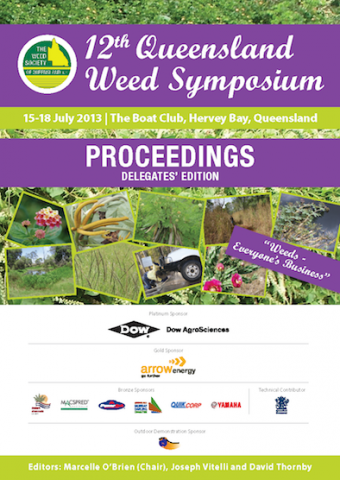Resources
Dredging Today
03 February 2014
The Australian and Queensland Governments yesterday released the 2014 State Party Report on the Great Barrier Reef World Heritage Area which highlights the significant progress being made to improve the management, health and protection of this amazing iconic area.
This progress report has been delivered to the World Heritage Committee meeting currently underway and demonstrates unequivocally the Australian and Queensland Governments’ commitment to better managing and protecting this natural wonder. Read more

The Conversation
01 August 2013
The Hawksbill Turtle (Eretmochelys imbricata) is one of the seven species of marine turtles and one of six in the family Cheloniidae. It is easily distinguished from other turtle species by its beak-like mouth and overlapping scales, or scutes. Harvested for centuries for their exquisitely patterned shell, some hawksbill populations now face an uncertain future.
Hawksbills, while widely distributed throughout the world’s tropical oceans, prefer warm, shallow waters and lagoons. Although hawksbills are most commonly associated with coral reef systems, they sometimes nest in mangrove-fringed islands or beaches. Like other marine turtles species, hawksbills are migratory and can swim long distances between breeding and feeding grounds. Read more
The Conversation
15 August 2013
Leatherback turtles (Dermochelys coriacea) are the largest, oldest and most widely distributed of the world’s marine turtles.
Its appearance alone distinguishes the leatherback from its relatives: shell-less and bluish black in colour, with seven fleshy ridges along its back, and dappled all over with white spots. It is the only extant member of the ancient Dermochelyidae family, which first appeared around 100 million years ago. Read more
The Conversation
17 October 2013
South-west of the port of Gladstone in Queensland lies Kroombit Tops National Park, housing many plants and animals, some of them unique. The reserve includes steep escarpments with wet, rainforest gullies.
Walk through these gullies during the spring-summer wet season and you might hear a unique “tink, tink, tink” sound. It sounds like a bird or someone hitting two tiny pieces of metal together, but actually it’s the Kroombit Tinker Frog. This tiny frog – growing to no more than 25mm – is found nowhere else. Read more
The Conversation
17 May 2013
Torrent frogs are an interesting group of frogs found in the rainforests of north-east Australia. There are four species in the group: the Mountain Mistfrog (Litoria nyakalensis), the Armoured Mistfrog (Litoria lorica), the Waterfall Frog (Litoria nannotis) and the Common Mistfrog (Litoria rheocola). Read more
International Business Times
30 August 2013
From above, Lady Elliot Island appears off Australia’s Fraser Coast like a tiny green discus in the vast blue of the Coral Sea. Up close, it's a place of exquisite details, and once I find myself 17 meters (55 feet) below the surface of its turquoise outer fringe, its not-so-tiny wonders come into sharp focus.
There are whitetip sharks that squirrel past and send pangs of electricity up my spine. There are mammoth manta rays the size of a car and the shape of a pancake gliding by, all in a row, en route to a “cleaning station.” There are green and loggerhead turtles, which make graceful cameos before meandering away onto a distant reef shelf, and unseen humpback whales whose moans become the eery ballads of the winter sea. Read more
ABC News
11 June 2014
Authorities in far north Queensland say they have been able to stop one of the world's most invasive weed species from spreading further into World Heritage-listed rainforest.
The Douglas Shire Council's open spaces coordinator, Peter Logan, says the Mossman River catchment has the only known hiptage infestation in north Queensland and the largest in Australia. Read more

 The Weed Society of Queensland
The Weed Society of Queensland
Murphy, H.T., Clarkson, J., Grice, T., Kriticos, D. (2013) Balancing biofuels and bisecurity: A containment strategy to minimise the week risk to Queensland from Pongamia, in: Proceedings of the 12th Queensland Weed Symposium. The Weed Society of Queensland.
Related to Project 7.2
Colette Thomas and Iain Gordon (CSIRO), Scott Wooldridge (AIMS) and Paul Marshall (GBRMPA) have won Risk Management Paper of the Year (2012) from the Journal of Human and Ecological Risk Assessment (HERA).
The paper, entitled “Balancing the trade-offs between ecological and economic risks for the Great Barrier Reef” came out of work carried out under the Marine and Tropical Sciences Research Facility, the fore-runner of the National Environmental Research Program.
The authors provided a conceptual framework of the Great Barrier Reef social–ecological system identifying a range of possible socioeconomic tradeoffs necessary to maintain the resilience of the reef under climate change. The conceptual framework is the first step toward development of a functional analytical tool capable of helping policy-makers choose between alternative management actions.
A HERA editorial board member commented, 'Development of a conceptual framework for the management of the Great Barrier Reef ecological system is of great utility for stakeholders and policy makers. The paper provides an excellent example of weighing benefits in decision-making for an iconic global wonder.' The award was based on two selection criteria: (i) degree of contribution to the field of risk analysis, and (ii) overall quality of writing.
The award was announced in the May-June 2013 issue of HERA.
Link to the online article here.
Courier Mail
31 May 2013
BAT experts have warned that urban councils face a losing battle to evict flying foxes, with a study showing they keep returning to their favourite roosts.
The Griffith University study found colonies gravitated back despite efforts over a decade to scare them away. Read more
![]()


